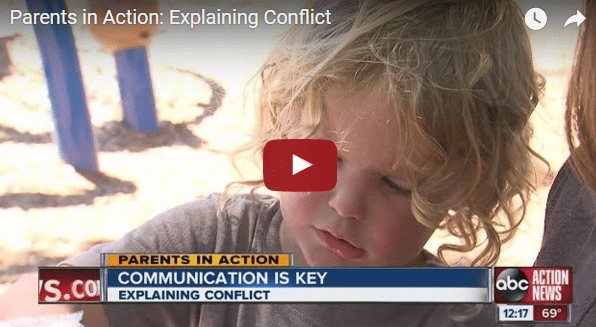EXPLAINING CONFLICT

Whether it’s an argument between siblings or in the classroom, kids encounter conflicts from time to time. And teaching kids how to spot and deal with it appropriately will help them learn to cope later in life when conflicts become more complicated. There are many reason why conflict occur; differences of opinion, not communicating feelings or lack of solution.
Here are some steps to take that can help your child better comprehend conflict and
Fact Versus Opinion
According to Donna Stefano, Project Director for Global Communities and PBS Parents contributor, an important part of conflict resolution will come from helping your child understand that there are two sides to every story and arguments often arise when opinions are stated as fact. When your child comes to you with conflict a good first step is to help your child see BOTH points-of-view, says KidsHealth.org. By doing this your child will hopefully understand where the other person is coming from allowing your kids to move toward resolution of the argument at hand.
Communication Is Key
Conflict can often be the cause of deep-rooted feelings like anger and depression and as parents we know how hard it is to communicate through those emotions. Explain to your children that although it may be difficult, communication and open conversation is a key component of conflict resolution. Whenever conflict arises, like right around chore time, have your child vocalize their feelings (without yelling) as well as have them listen to yours. This will set them on the path to verbalizing their feelings as opposed to bottling their emotions to the breaking point, which will often result in more conflict.
Working Toward a Solution
Once your child has listened and communicated the conflict at hand, encourage them to always find a solution. Push them to work together to find an amicable resolution that allows everyone can agree upon. Make sure your child understands that the solution will not always be the intended outcome they wanted. Women’s and Children’s Health Network suggests that your child write down as many resolutions as possible, even if they’re silly. Then use process of elimination to find the best option for everyone involved in the conflict.
Conflict is a part of every day life at school, home and work. Helping your kids cope with conflict early in life will set them on a path of open communication and conflict resolution.
For more information and activities on conflict resolution, visitKidsHealth.org .